This week I finally got around to repotting a red pine forest that hadn’t been worked on in a while. Midway through, I paused to take note of the different techniques I was using to do the work.
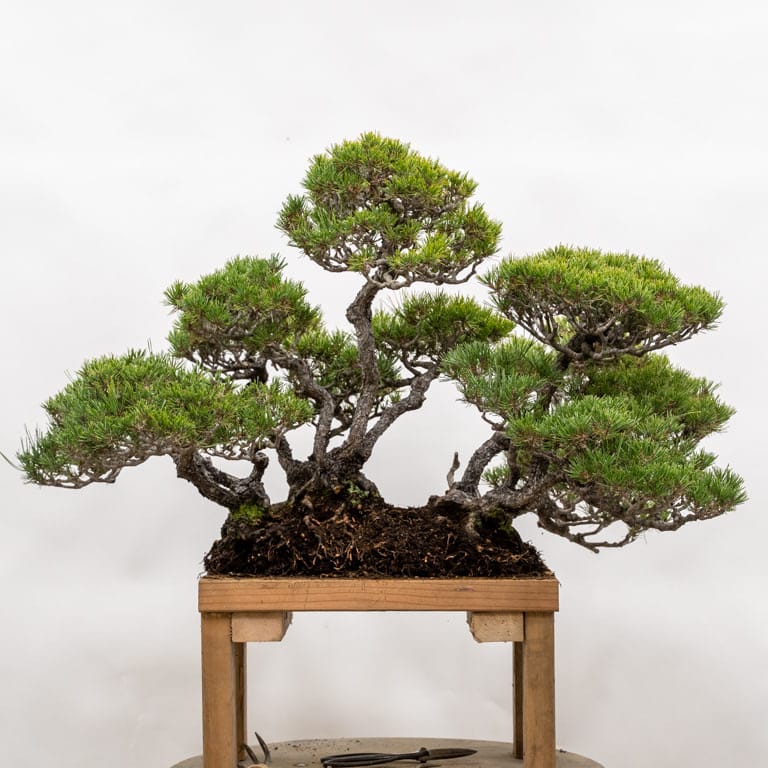
Midway through the repot
I’d started by combing out the mat of roots growing along the bottom of the pot.

After taking the tree out of the pot

After pruning the bottom of the root ball
Next, I removed a half inch of soil from the sides of the root ball with a root hook.
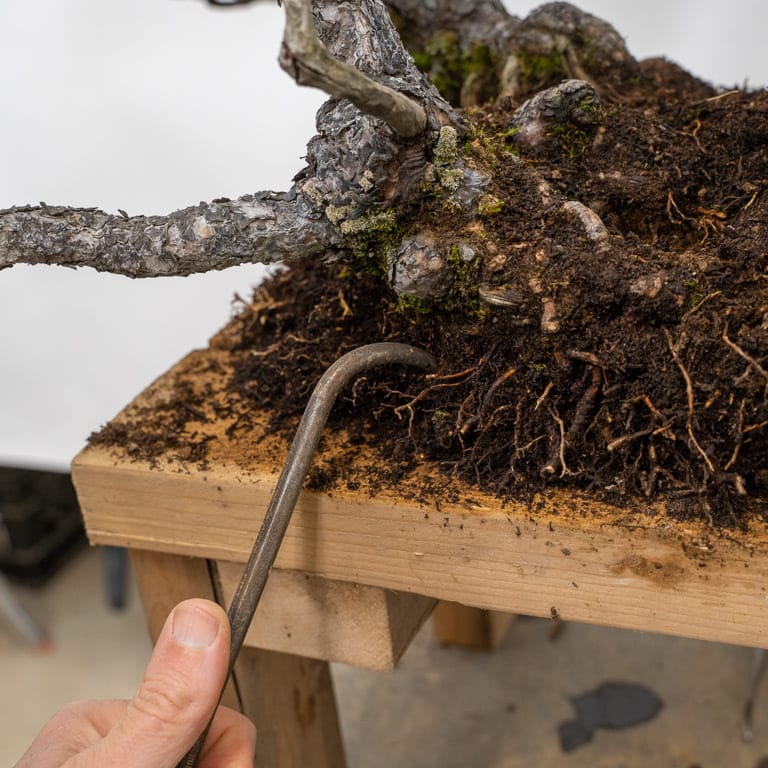
Reducing the root ball with a root hook
The next step was to chip away at the top half-inch of soil which had formed a crust and had made the tree hard to water. I used a small root hook to do this work by twisting it to the side and prying off one section of soil at a time.
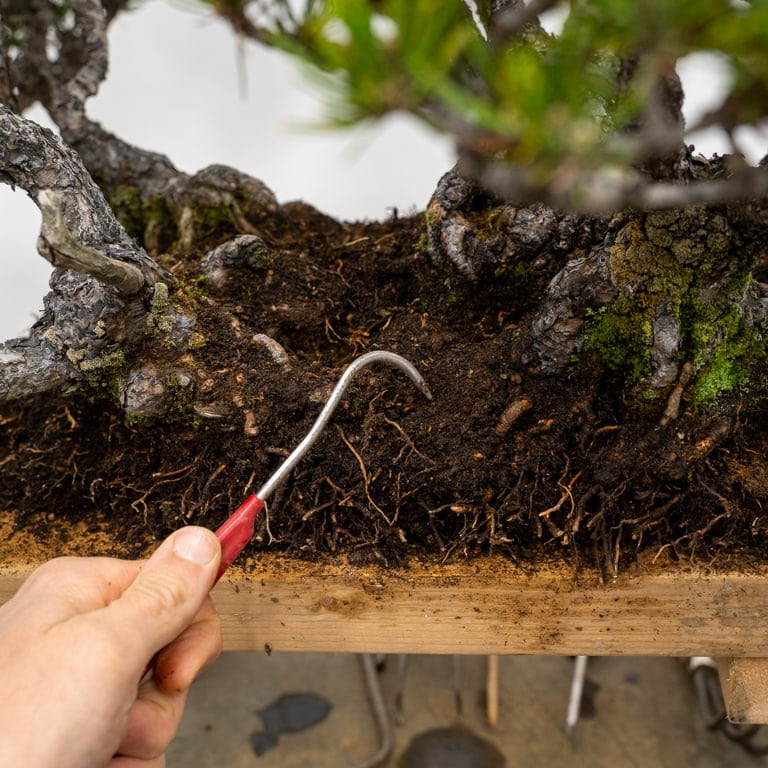
Breaking up the surface soil with a small root hook
I combed out the surface roots with bent-nose tweezers.
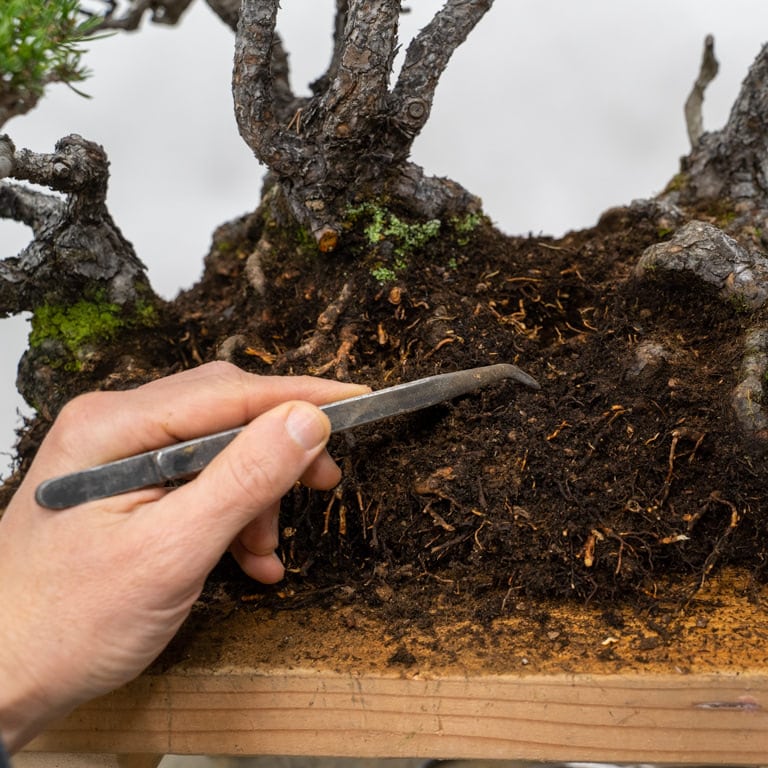
Combing out the surface roots
The following step was one of the most important. I used a screwdriver to perforate the root ball and create holes that I could fill with new soil.
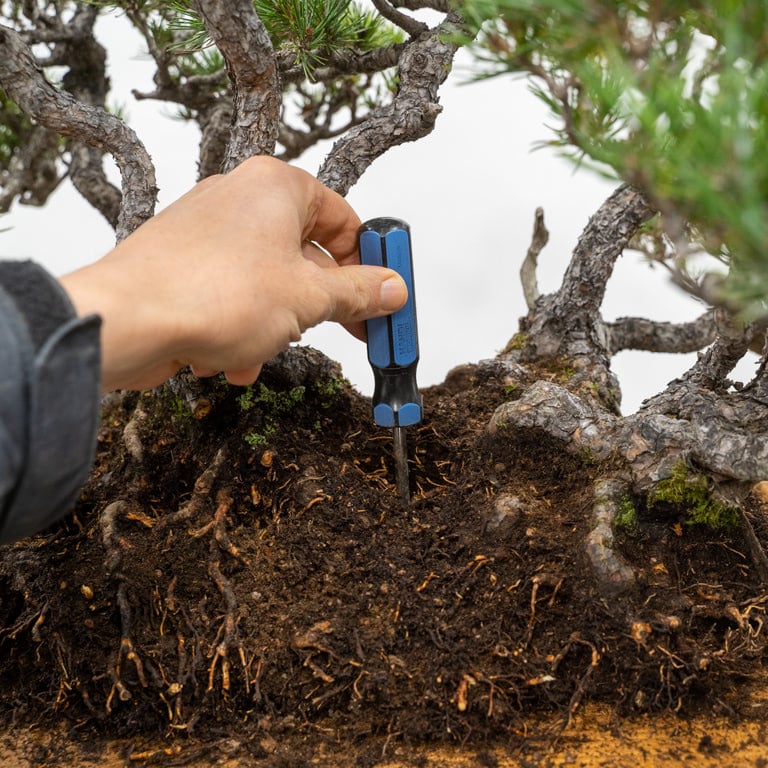
Using a screwdriver to create holes in the root ball
Perforating the root ball will make the tree easier to water and the large holes with fresh soil will offer new roots plenty of space to grow.
Altogether I spent two or three hours repotting the tree. When I was done, I applied a thin layer of shredded New Zealand sphagnum moss to hold the loose soil in place.
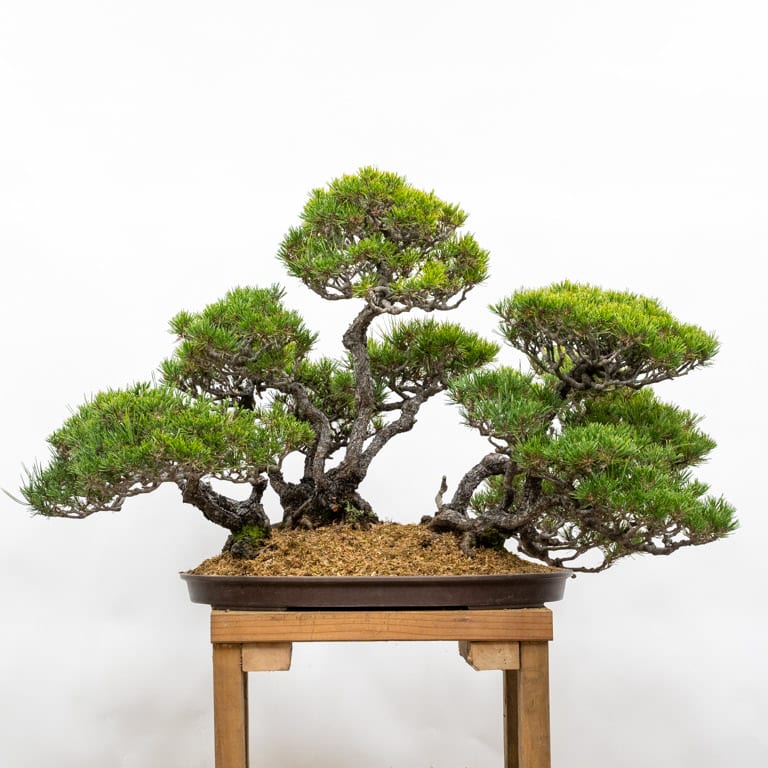
Repotting complete – 21″
Why use so many tools to do this work? It’s a combination of comfort and effectiveness.
- The larger root hook allows me to quickly break away the edges of the rootball without disturbing the lowest branches.
- The small root hook allows me to remove soil from small spaces and easily apply leverage to break away crusty patches of soil.
- The bent nose tweezers are good for combing out roots because the soft angle lets the tweezers glide along over roots without catching on them like a root hook would.
- The screwdriver is stronger than bamboo (and more comfortable to hold) which makes it a perfect tool for perforating the root ball.
I’ll often do all of this work with bamboo chopsticks when the soil is soft or there is more space to work with, but I don’t hesitate to use additional tools when it can make the work speedy or comfortable.
Do you have favorite repotting tools in your toolbox? Let us know in the comments below!
Subscribe to Bonsai Tonight
New Posts Delivered Every Tuesday and Friday
Todd says
a question about sphagnum moss: they didn’t have any sphagnum moss, so I bought some “green moss” (EB Stone) I put it in water to soak, and after a week or so, i took off the lid and it smelled like paint thinner or kerosene, or …?
Do you know anything about that? should I throw out the “green moss”? Is that not sphagnum moss?
sorry, it is a little off the subject…
Jonas Dupuich says
I’m not a fan of using the green sphagnum moss as it can sprout and grow in the pot. It’s also coarse (and apparently can smell bad!). The New Zealand sphagnum moss (aka orchid moss, aka white sphagnum moss) doesn’t grow so it’s great to use for bonsai.
Vance Hanna says
Jonas!
So well done as usual! I have a lot of repotting ahead as well this Spring!
I’ll be hopefully be sending in a few entities for the PBS soon!
Best to you,
Vance hanna
Jonas Dupuich says
Thanks, Vance – I’m happy to hear about the submissions!
Andy says
Great post, as usual! Regarding the screwdriver technique, how closely do you space the holes you are making? One hole a couple square inches or so?
Jonas Dupuich says
Thanks, Andy! If the soil isn’t bad maybe one hole every inch will work. When the soil is a solid block I put in lots of holes at different angles to loosen the whole rootball.
Dane says
I love this display. And the one thing I’d add at the end of your description is how very happy the trees will be afterward. Like a trip to the spa.
Jonas Dupuich says
Ha, thanks, Dane!
Richard Green says
Wonderful details Jonas. I’ve used all of the tool’s you’ve mentioned. There is one more tool I like to use occasionally, it’s a medium sized, ice pick. I have a few and keep the dull one for my root work. I also have used it to perforate the roots like you do with the screwdriver.
Jonas Dupuich says
Thanks, Richard! I use aluminum picks that are similar to ice picks – they’re great when there’s not much room to work and you need something slender and strong.
james mickelson says
Good afternoon Jonas. What bonsai club do you belong to and is it meeting or is it just zoom? I used to belong to San Diego Bonsai but moved up to Watsonville. Where can I get decent pine material to work with locally? I’d love to come see your trees. I have some blue glaucoma Pines and some very young pinus thunbergia starting training. Hope all is well with you.
Jonas Dupuich says
Hi James – I teach at a number of local clubs, and there are at least two near you in Watsonville and Santa Cruz. There’s a list of Northern California bonsai resources here (https://bonsaitonight.com/bonsai-resources/) and you’re welcome to visit my garden if you’re in the neighborhood – just call or write using the contact info at the bottom of the page and we can go from there.
Sam Hurlbut says
You said it had been a while since you last worked on it. Bout how long was that?
Jonas Dupuich says
Good question – I checked old photos and couldn’t figure out when it was last repotted. It might have been four or more years ago.
Craig says
Nice job, nice trees. I need to do a similar thing to my group chestnut planting. Coming into Autumn here in NZ so will plan to do it in5 or 6 months.
FRITZ says
I LOVE THAT TREE / FOREST ,,REALLY DO .
THANKS FOR THE LESSON ALWAYS GREAT TO SEE OTHERS WORK
. I VERY MUCH LOOK FORWARD TO RECEVING YOU MAIL THANKS MUCH
Zack Clayton says
One of my favorite tools is an aluminum gutter nail I use in lieu of a chopstick. They are about 10″ (~25cm) long and have a head that makes a good thumb rest for aggressive work. I have several in slightly different diameters but my favorite is ~1/4″ and I’ve had it for about 30 years.
Jonas Dupuich says
Giant nails are great for this kind of work – thanks for the tip Zack!
jean-yves Guilard says
belle forêt et superbe rempotage